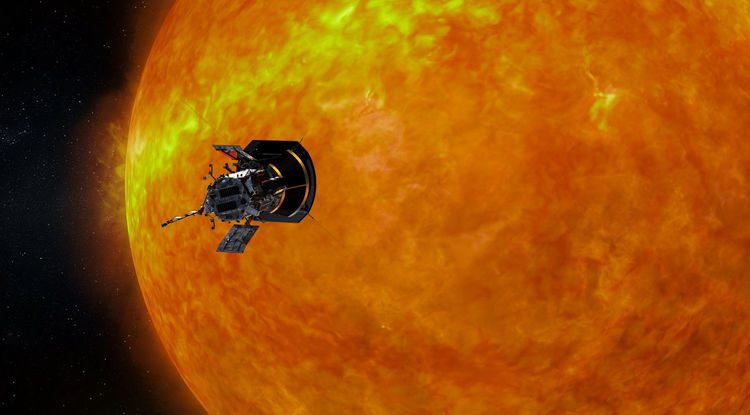NASA’s Parker Solar Probe completed its third orbit around the sun on Nov. 15, representing a 60-year quest by scientists to create a spacecraft that can withstand the extreme environment of Earth’s star.
After data collected during the spacecraft’s first two solar orbits was released on Nov. 12, two University of Arizona researchers involved in the mission say they are excited about what’s to come. The probe, which launched on Aug. 12, 2018, is the first attempt to get close to the sun and study the solar wind at its source. The probe will conduct seven flybys, hurtling around the sun at 430,000 mph and facing intense heat and solar radiation.
Similar to the wind in Earth’s atmosphere, the solar wind can be either gentle or extremely violent.
With this mission, scientists are hoping to answer important questions about how energy and heat move through the solar corona, the outermost part of the sun’s atmosphere, and what accelerates the solar wind.
“This is an exciting time to be a heliophysicist,” said Lunar and Planetary Laboratory professor Joe Giacalone, who is on the team of Integrated Science Investigation of the Sun, an instrument aboard the probe that detects very energetic particles.
“The data that is now publicly available comes from a region of space we have never sampled previously. With many brilliant scientists now poring through this amazing data set, new discoveries about our star are soon coming,” he said. As the sun is Earth’s source of light and heat, data collected from this mission can also tell scientists a lot about the sun’s relationship with the planet, including its ability to disturb Earth’s magnetic field.
Science teams led by principal investigators from partner institutions have been digging into the data collected by the probe in preparation for the mission’s first science results, which will be released later this year.
The four instrument suites onboard — FIELDS, Integrated Science, SWEAP and WISPR — have been observing the characteristics of the solar wind in the sun’s corona.
With these instruments, the scientists are also hoping to investigate the dramatic jump in temperature the solar wind undergoes as it leaves the sun’s surface and enters its corona — from 9,000 degrees to 2 million degrees.
Kristopher Klein, mission co-investigator and assistant professor in the UA’s Lunar and Planetary Laboratory, is affiliated with the SWEAP instrument on the spacecraft, which was designed to take measurements of the thermal properties of the charged electrons and atoms within the solar wind plasma, a stream of energized, charged particles that flow outward from the sun.
“By combining these measurements, we can work toward constructing a more complete picture of how the solar wind changes as it expands from the solar surface, and what physical processes continue to act to heat this system,” Klein said. “We’ll get close enough to where most of the mechanisms that are pushing the particles out are still actively doing that pushing.”
With 21 more solar orbits left, the Parker Solar Probe will get closer to the sun with every rotation, eventually coming as close as 4 million miles from the surface and making it the closest observations ever made of a star. The data from the spacecraft’s first two orbits can be accessed through the NASA Space Physics Data Facility and is available for interested public users to manipulate and analyze.
“Releasing this data to the public will allow them not only to contribute to the success of the mission along with the scientific community, but also to raise the opportunity for new discoveries to the next level,” said mission project scientist Nour E. Raouafi of the Johns Hopkins Applied Physics Laboratory, which manages the mission for NASA.





